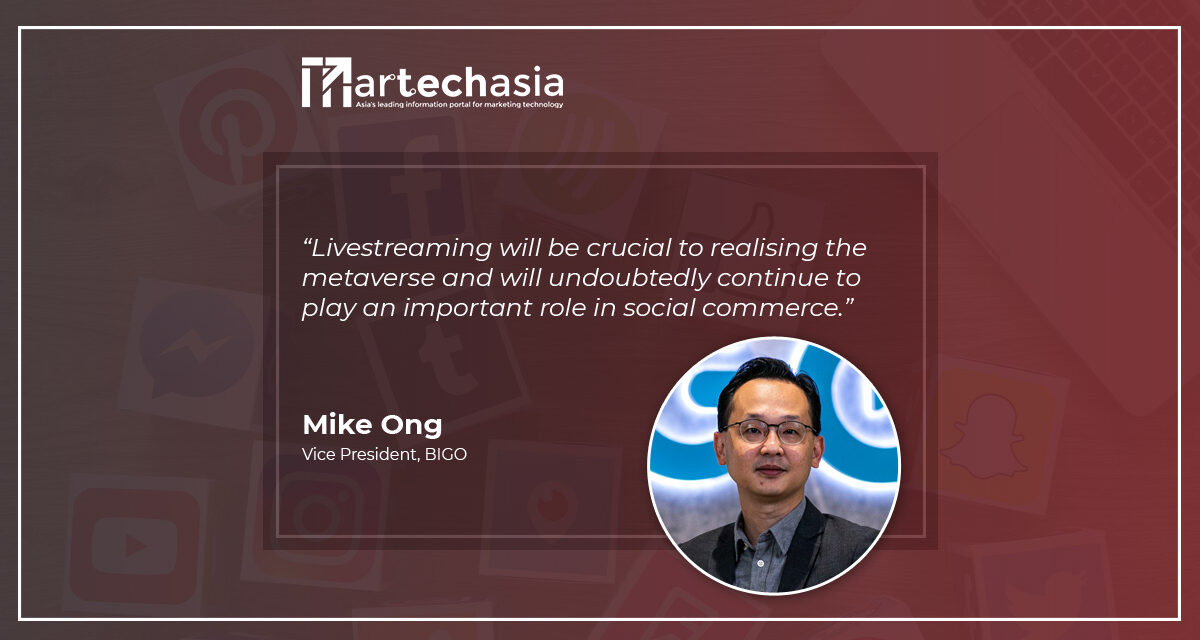When livestreaming and e-commerce converge, “live commerce” emerges. Consumers and brands experience real-time engagement and an instantaneous feedback loop.
Livestreaming is inevitably becoming the beacon of futuristic communication, primarily because of its engaging co-presence and borderless network capabilities. It has a unique ability to enhance the creator economy and boost user-generated content via real-time engagement.
Simultaneously, social commerce, an offshoot of e-commerce albeit focused on social media platforms, is also taking the world by storm thanks to its seemingly limitless accessibility and convenience. Now more than ever, brands are leveraging and optimizing social commerce as part of their core sales strategy for the digital future.
The key differentiator of social commerce vs e-commerce is the engagement aspect that social commerce offers. Given livestreaming’s unparalleled capacity to enable seamless, real-time engagement, it is the ideal complement for social commerce, potentially taking it to the next level.
The advent of live commerce
When livestreaming and e-commerce converge, “live commerce” emerges. Consumers and brands experience real-time engagement and an instantaneous feedback loop.
Brands on prominent and established e-commerce platforms such as Shopee and Lazada have had notable success through live commerce where they leveraged the engagement capabilities of livestreaming to create interest and increase participation in landmark sale events such as 11.11 and Black Friday, translating into more social interactions and, potentially, higher sales conversions.
Through livestreams, consumers get a first-hand look at the product and can have their questions answered in real-time, while sellers can recommend how best to use the product. This enhanced visibility and engagement is also complemented by stream-exclusive, limited time offers and discounts, creating a hot-selling loop that accelerates the conversion of “I want” customer to the all-important “I buy”. Combined, these factors strongly incentivize participation in live commerce.
Aside from monetary incentives, celebrities and social media influencers are increasingly being tapped on to host live commerce events or endorse particular products or services on them. Not only does this generate more brand awareness by attracting followers of celebrities to watch the event, but it also allows brands to leverage audience trust towards these personalities as a tool to drive sales.
To illustrate, we organized a series of online marketplace events in Thailand and Malaysia on our Bigo Live platform. These were designed to replace the experience of physical shopping and involved collaborations with celebrity influencers. We found that consumers were more willing to make online purchases during influencer-led session. If sustained over time, this could lead to an increase in both brand exposure and sales figures.
Online communities fostered by influencers also play to audience-targeting algorithms on social media platforms – increasing the chances of speciality streamers being highly ranked on social feeds. This provides another avenue for brands to be discovered by the right target audience on social media through livestreaming, increasing their likelihood of making a sale.
Levelling the playing field between sellers
Many small or homegrown brands have pivoted to social media as their all-in-one business platform and audience engagement channel. Now that more customers are purchasing based on product rather than just brand prestige, social media is making it easier than ever to discover, support and engage with smaller brands by implementing critical features such as livestreaming.
Any person with a mobile phone, computer, or web camera can host a livestreaming session as long as they have Internet access. Essentially, livestreaming democratizes the online retail space, as sellers can now talk and sell directly to customers instead of going through a middleman. This helps to minimize overheads, maximize profits, build customer loyalty – resulting in repeat purchases.
From a customer’s perspective, a ‘what you see is what you get’ experience is provided, signaling authenticity and reassurance. They also often get personalized recommendations and better prices as sellers no longer have to factor in third-party cuts. Ultimately, livestreaming and social commerce elevate smaller- and medium-sized enterprises (SMEs), helping them reach a more equal footing with larger retail players.
Livestreaming’s place in commerce’s virtual future
With the use of novel technologies like virtual and augmented reality (VR and AR), more companies are leveraging livestreaming and social media apps to blur the boundaries between ‘virtual’ and ‘in-person’ purchasing experiences.
For instance, luxury craftsmanship brand Piaget employed livestreaming to establish its VR-led virtual boutique in Singapore, incorporating the use of full 3D body tracking technologies to gauge how items would fit on a customer. This enabled customers to browse and virtually ‘wear’ the brand’s luxury apparel true to size without ever leaving their homes.
The continued integration of AR, VR and other immersive tools with live commerce exemplifies livestreaming technology as a cornerstone of next-generation retail, made tangible through real-time engagement. It’s easy to picture future consumers using livestreaming tools in online environments to virtually try on products, speak with sales consultants and receive live updates on their purchases – all at the same time.
The evolution of livestreaming and social commerce
As the nature of social media continues to evolve, so will social commerce. The metaverse, for example, is set to be the next evolution of social media with unparalleled levels of participatory, immersive content. Livestreaming will be crucial to realizing the metaverse and will undoubtedly continue to play an important role in social commerce.
Brand goliaths such as Samsung and Nike are already establishing their metaverse presences and relying heavily on livestreaming tools to conduct real-time interactions and transactions in these virtual spaces. This is an early indication of livestream’s potential as the premier medium for all things commerce in the future, and it would be interesting to see where livestreaming and its dynamic convergence with social commerce can go from here.


















